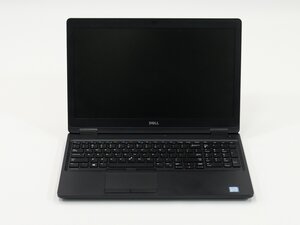crwdns2862678:0crwdne2862678:0
crwdns2895503:0crwdne2895503:0
If screen on your Dell Latitude 5580 laptop remains black after powering on, follow these steps and checks to diagnose and fix your display issue.
First Steps
Perform some basic checks on your laptop to write off any possible, easy-fix issues that could be causing the black screen, or to start diagnosing the cause.
- Brightness: Make sure your screen’s brightness is not turned all the way down. (Adjust using Fn + F11/F12)
- Power indicator: Is the power light on or blinking, and is the keyboard backlights functioning? This can help identify if the issue is with the power supply of the laptop.
- External Display: Via the HDMI port, connect your laptop to an external monitor. If your laptop screen shows up, it’s likely an issue with your internal display.
- Perform a POST ( Power On Self Test): Power the laptop on checking for beep codes or lights. If no Dell logo appears, it is most likely a hardware issue.
- Boot into Safe Mode / Recovery: Power it on and repeatedly tap F8 or F12. Try to access Windows Recovery or Safe Mode. If you can see something here, it is most likely a software issue, try rolling back display drivers or continuing to the next step on performing a hard reset.
Software/Operating System Failure
In the case of software issues/operations causing the black screen issue, performing a hard reset can reinitialize the BIOS (Basic Input/Output System) and other core components.
To perform a hard reset, follow these steps:
- Unplug the power adapter and fully shut down your laptop.
- Disconnect any laptop peripherals such as a mouse or headphones.
- Remove the back cover of your laptop, exposing the laptop’s internal components.
- Locate and safely remove the battery.
- Press and hold the power button for at least 30 seconds to drain residual flea power.
- Reconnect the battery, and reassemble your laptop.
- Plug in charger.
- Power on laptop.
Internal Display Connection Failure
If the display cable connection was jolted out of place after an impact or other reason, it could be causing an issue with the display causing the black screen. You can visually check the connection to see if a replacement or readjustment would be needed
- Follow steps 1-4 from the earlier guide on performing a hard reset. This will ensure better safety when handling the internal display.
- Using a thin tool or your fingernail, carefully separate/unsnap the plastic LCD bezel, working around the edges of the screen.
- Unscrew and flip over the display, taking great caution with the ribbon cable at the bottom of the display.
- You can now see the display cable and connector for your internal display. Take note of where the ribbon cable connects with the screen. If it is ajar/disconnected, reinsert or readjust the cable. Also check for frayed, broken, or corroded parts. If present, a full display replacement may be required.
RAM, SSD, or other internal failures
Reseating some internal components may help reset or fix certain hardware issues causing your black screen.
- Fully unplug and power down your laptop.
- Unscrew and remove the back cover of your laptop.
- Locate and safely re-seat the RAM stick. (remove and reinsert it carefully).
- Locate and disconnect/reconnect the SSD or HDD.
- Check and re-secure any loose components.
- Check for corrosion or breakage with any components.
- Reassemble and check the laptop display again.
If all software and hardware checks have failed, hardware replacements may be required. Check your warranty with Dell to see if a free motherboard or display replacement would be possible.


crwdns2944067:00crwdne2944067:0